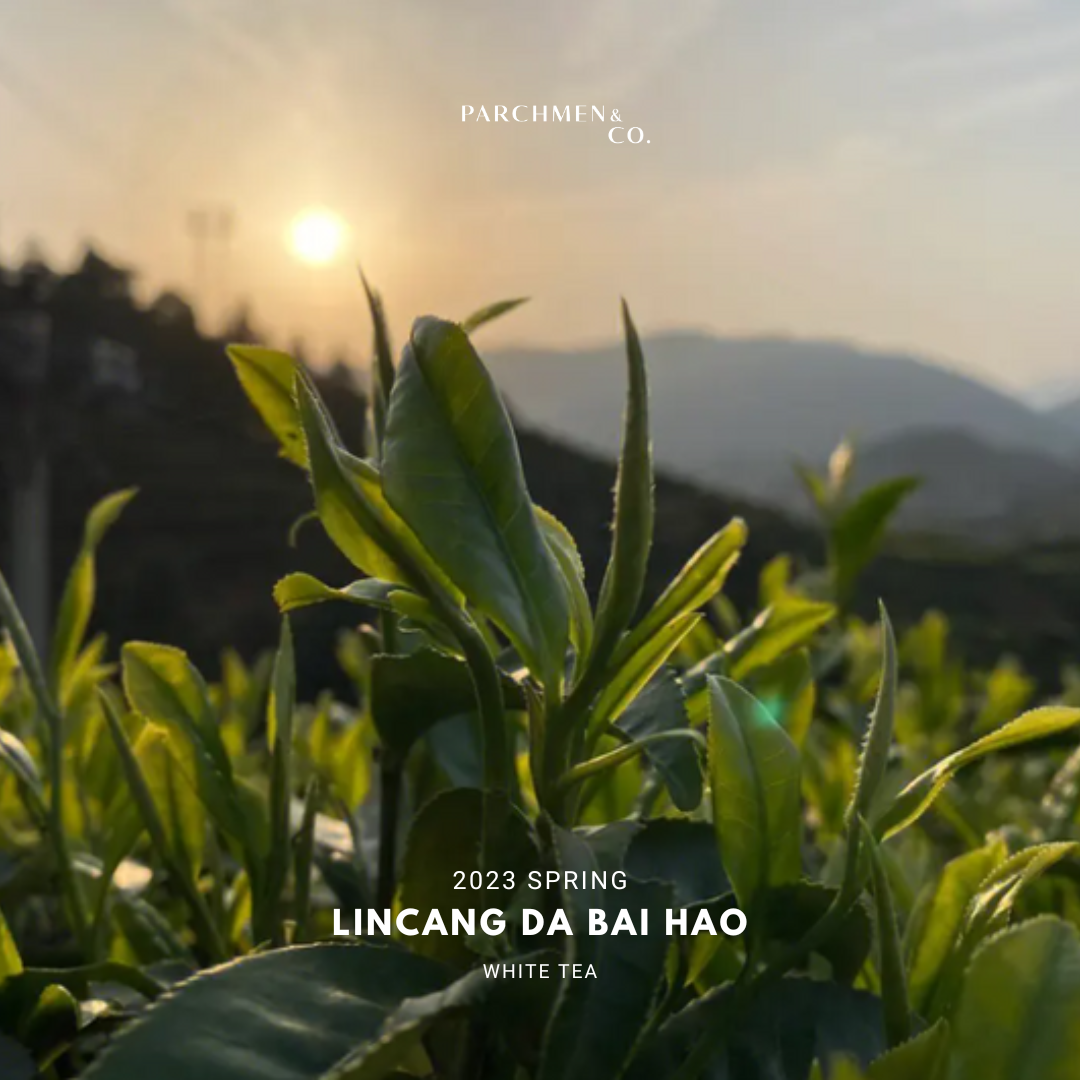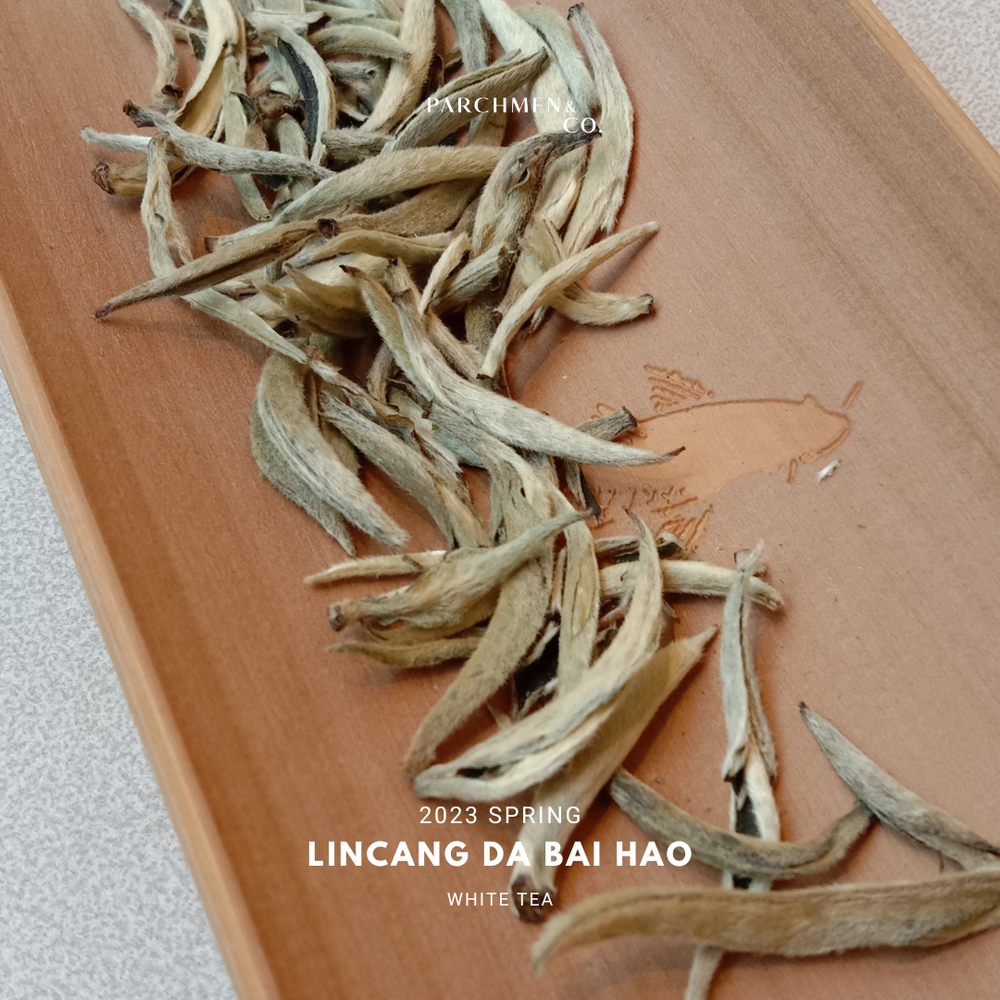2023 Yunnan (Lincang) Da Bai Hao 'Silver Needle' 临沧大白毫
- In stock, ready to ship
- Backordered, shipping soon
Yunnan Da Bai Hao is produced in Jing Gu township (景谷) of Pu’er City, south of Yunnan. It is known as ‘Home of Tea’ and forms part of the Ancient Tea Horse Route. Jing Gu is to the immediate north of Si Mao, which is home of the oldest tea tree known to the world at Bang Wei Village, the discovery of which settled the century old debate between China and India regarding the origin of tea. Both Si Mao and Jing Gu are part of Heng Duan Mountain Range (横断山脉) which stretches from eastern Tibet to the Sichuan Basin, and carries with them rich but unknown cultures and history of tea making. Although Jing Gu is administratively under Pu'er, the locals identify the teas there as that of Lincang, hence the name in our tea. Lincang is its immediate neighbour to the northwest.
Yunnan Bai Hao is made in the south of Yunnan, mainly in Xishuangbana prefecture and in Pu’er and Lincang area. Within these areas, there are in fact two styles - Moonlight White (月光白) and Da Bai Hao (大白毫, translated to Large White Downy). The former is a recent new creation, is shaped thin and curvy like the crescent moon. Our tea list features a Crescent Moon from north Vietnam (immediate south of Yunnan) that resembles this style. Its techniques is often shrouded in mystery, and is supposedly picked at night under moonlight, which explains its name. The Da Bai Hao is luscious and thick, and is picked and processed in daylight just like any other teas. The striking differences in their shape and size arise from the tea varieties from which they are made. Our tea today is from Jing Gu and is made using the Jing Gu Large White Tea variety (景谷大白茶), which often carries a yellow-greenish hue. Compared with the Fujian Silver Needle white tea (白毫银针) which was created in 1796, the Jing Gu white tea has a slightly shorter known history, being marketed outside the hills only about a century ago. Fujian Silver Needle is made using the assamica or slightly smaller varieties grown in the shrub form, while the Yunnan Da Bai Hao is made using assamica variety grown in the arbor form. The Fujian white tea is first sunned then air-dried indoors while Yunnan Da Bai Hao is totally air-dried indoors. Looking like velvet with a neat and smooth coat of fur, our Jing Gu white tea is picked 1 bud and 1 leaf, with buds in silver and the leaf in a dark tone. This is why it is sometimes called Silver Needle.
We are brewing this tea in two ways - our Parchmen glass gaiwan and our Parchmen Zisha Tea Pot. There are material differences between these two wares. Glass is denser than ceramics and needs more energy to heat it up. While it is important to always preheat the teaware before brewing, glass will 'steal' more energy from the brewing water than ceramics. During the brewing, due to its density again, glass will conduct heat away from the brewing water faster than ceramics, causing a larger drop in brewing temperature. For a tea that requires a higher temperature and a longer time for complete flavour extraction, glass will not be a suitable material to consider. Conversely, the porous nature of the ceramics results in a comparatively lower thermal conductivity, allowing the zisha teapot to maintain its temperature for a longer time.
In the zisha teapot, we are brewing 3g to 80 ml of distilled water, at 98°C for 90 sec. Brew colour is light cinnamon. We got intense notes of berry, bubblegum and mango nectar from the brewed leaves, continuing well into the brew with intense sweetness and cooling to a 'bandung' note of rose and milk. The berry sweetness is a direct result of higher heat. In the glass gaiwan, we are brewing at the same ratio, at the same temperature but with a longer time of 75 sec. The berry notes were replaced with notes of eucalyptus. Generally, both brews are balanced without astringency or bitterness, and the tea can be brewed up to three times before thinning out.
Thank you for coming onboard and travel with Parchmen & Co to savour our world in a cup!
Brew using 3g to 80ml water, at 95°C, 60 sec










